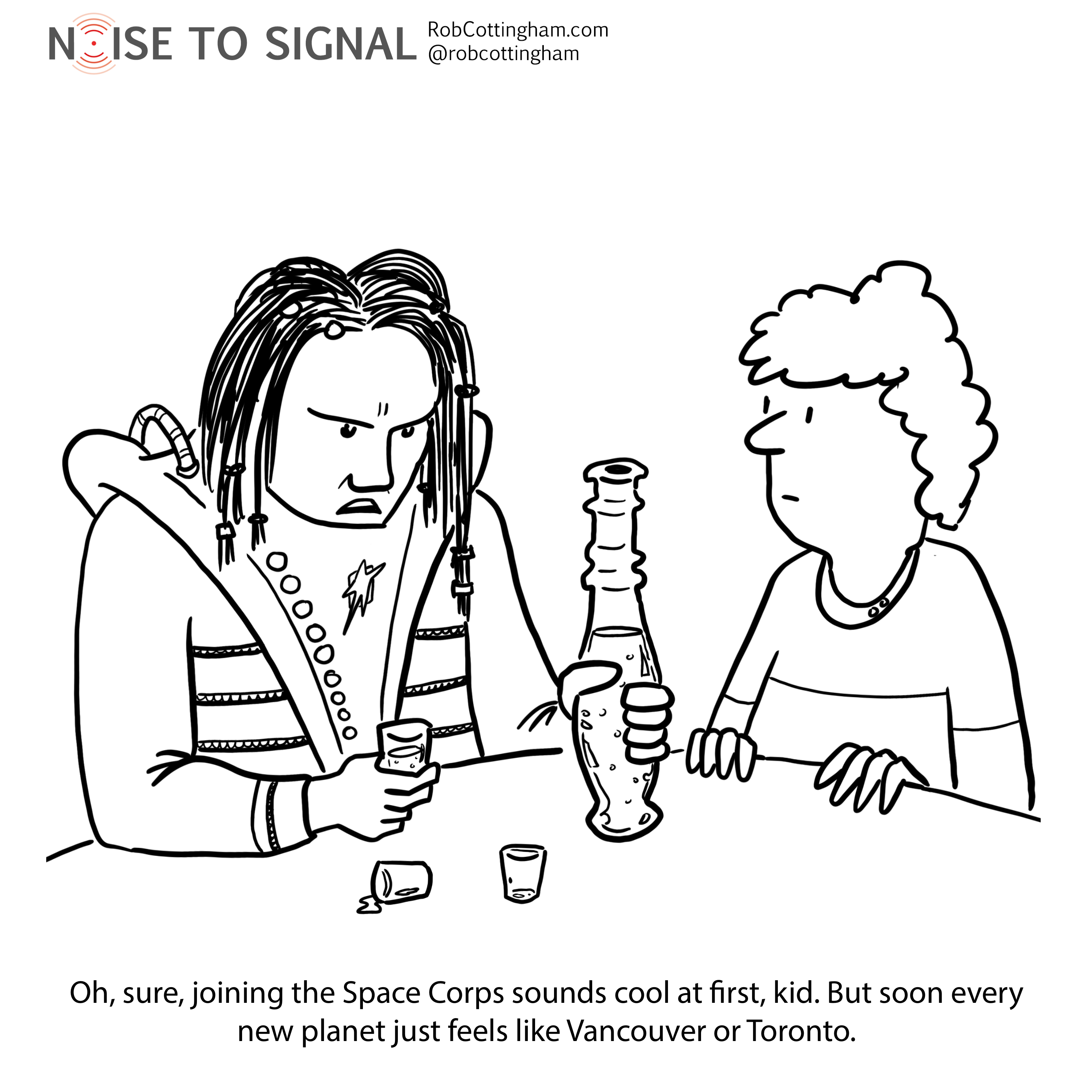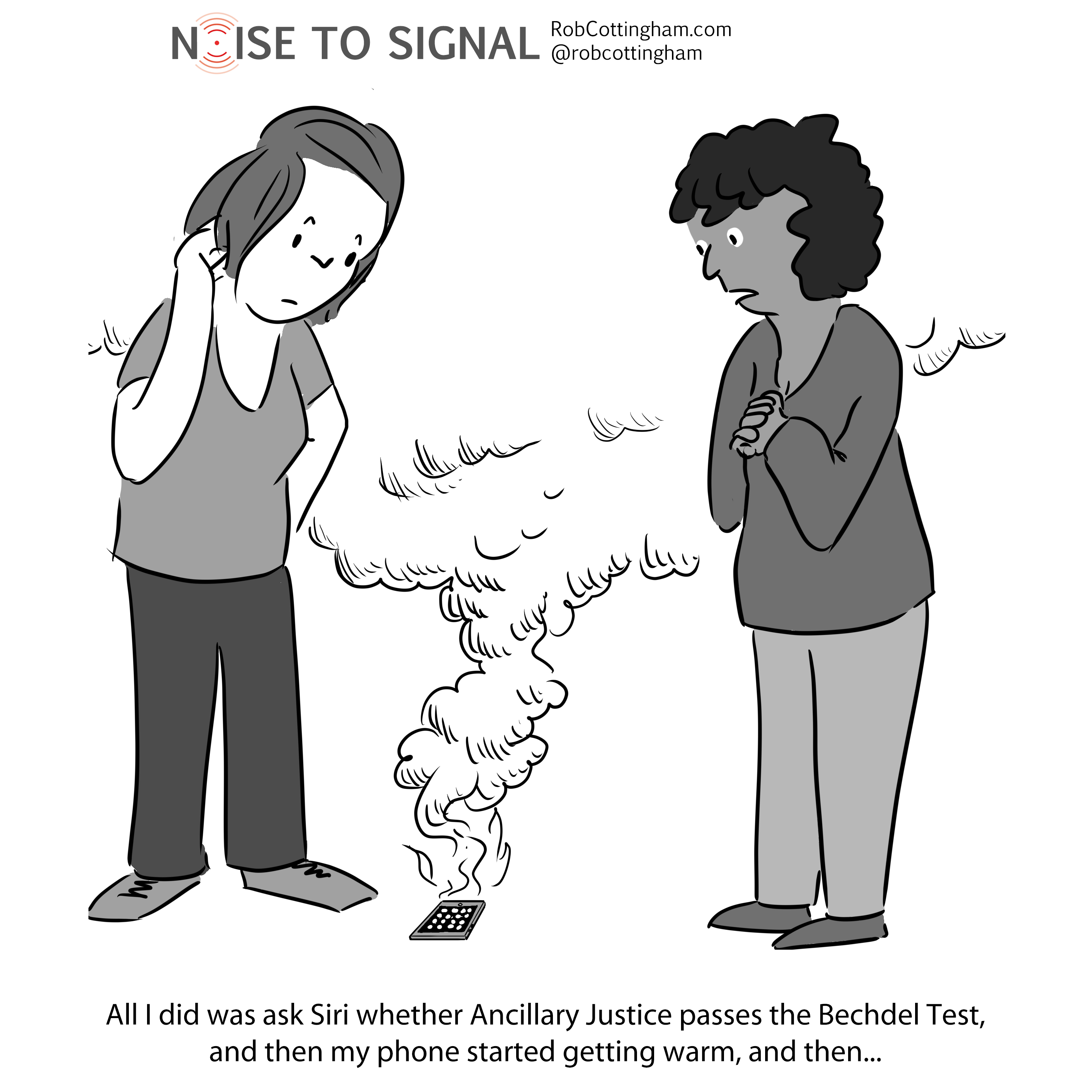A while back, Star Trek: Strange New Worlds aired an episode where two characters travel back in time to 21st-century Earth where they visit… Toronto.
Not Toronto dressed up as New York City, but actual Toronto, where Strange New Worlds is made.
That episode aired just weeks after the 25th anniversary of the X-Files fifth-season finale, the last to be shot in Vancouver. And it was a pretty big deal back then that, for the very first time in five years, Vancouver was allowed to play itself in the episode.
For years, both cities have figured in televised sci-fi, but rarely as themselves. They’ve been everything from Battlestar Galactica’s Caprica — and New Caprica, Kobol, Old Earth and New Earth — to Earth: Final Conflict’s Washington, D.C.; and from an abandoned Illyrian colony in SNW (shout out to Ontario Place) to the alien city of Tollana in Stargate SG-1. And while Vancouver itself hasn’t shown up yet in Star Trek: Lower Decks, animated by some very talented folks here in town, we do get our very own Parliament-class starship.
I’ve lived in both cities, my body traversing their real-world selves and my imagination roaming their fictive alter-egos. I’ve walked past sets for The Flash on my way to and from meetings, and seen the office building I worked in transformed into a location in Altered Carbon’s Bay City. And over time, having caught repeated glimpses of my cities in various futuristic sci-fi productions — heavily made up, but still recognizeable — I’ve come to feel a certain sense of yearning for their visions of the future. (Or, in the case of Battlestar, maybe the very distant past? Someone needs to explain that finale to me again.)
It’s probably inevitable that I’d find being a denizen of a fictitious future so appealing right now, since the non-fiction version is looking pretty bleak. My great hopes for the Internet have (activates understatement field) proven excessively optimistic. I can’t take comfort in my younger dreams of space exploration, since its trajectory seems to have scientists increasingly muscled aside by billionaires with weird-ass agendas. Even Star Trek, that reliable source of utopias, has us scheduled for a nuclear war starting in just a few years. (That, by the way, tracks disturbingly well with the Bulletin of the Atomic Scientists’ most recent Doomsday Clock update.)
But maybe that’s the most encouraging thing about futuristic sci-fi TV these days: Even its most dystopian visions of the future at least assume we’ll have one. I’m grateful for the fine folks doing that storytelling work just around the corner from where I’ve lived. And I’ll keep taking some reassurance out of seeing my familiar haunts morphed into dilithium mining colonies and alien ruins.
P.S. — For a deeper take on this, check out Alexandra Samuel’s WSJ piece from 2017, “Vancouver Residents Get a Taste of the Future.”


